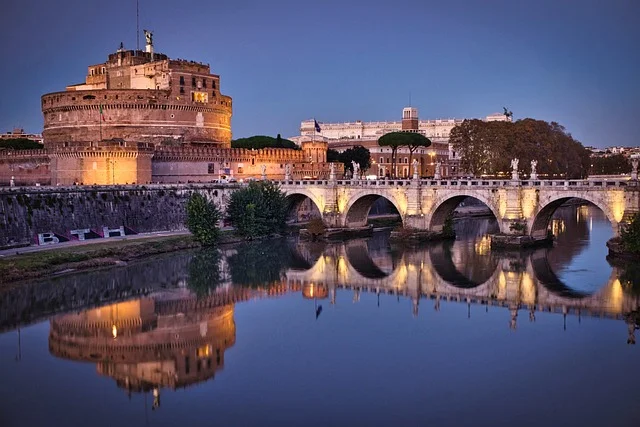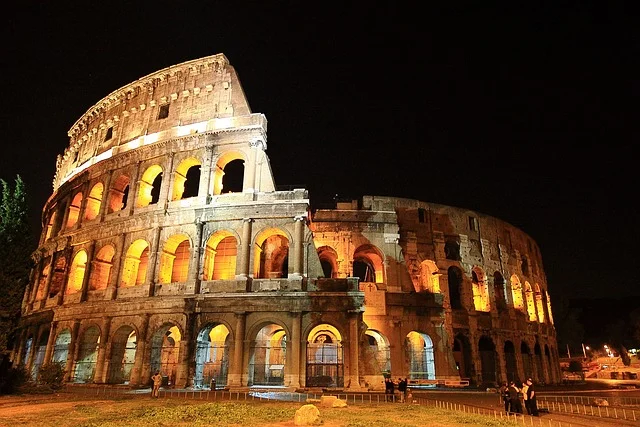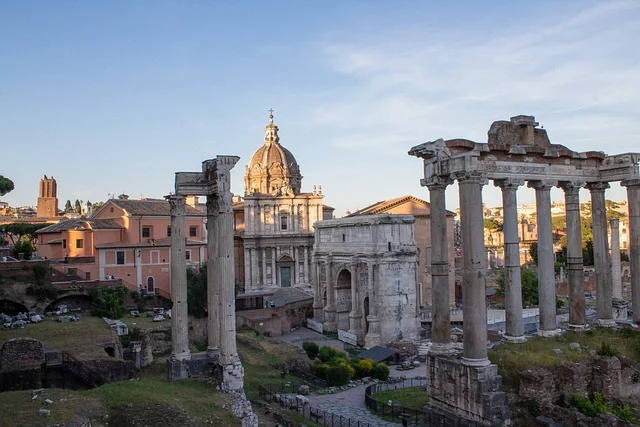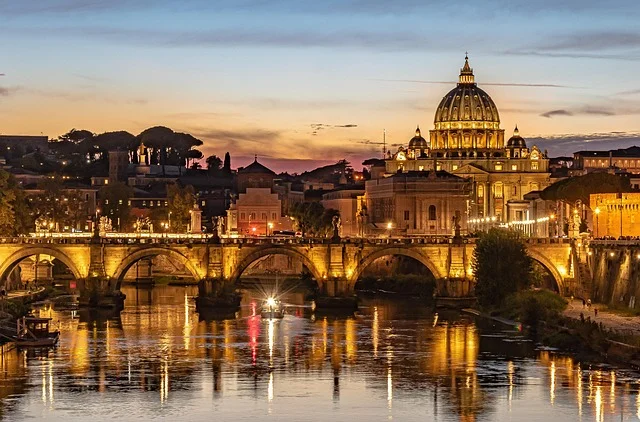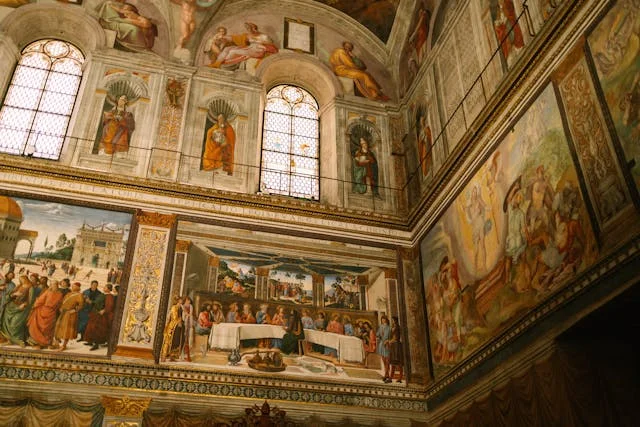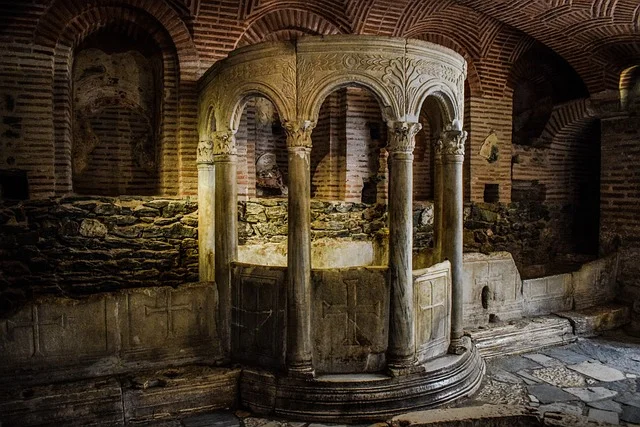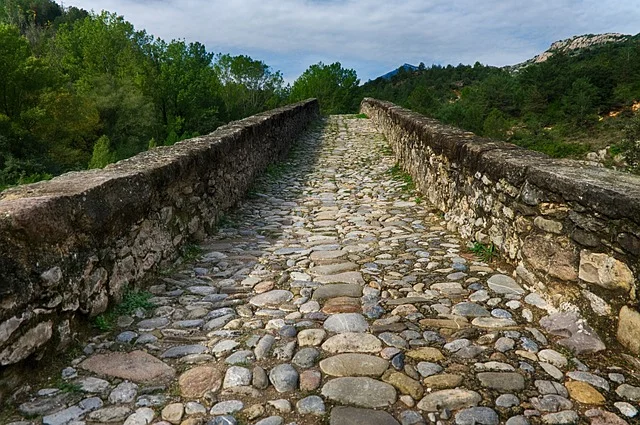Rome is considered the Eternal City because each nook whisks one away by telling tales about ancient empires, grand architectural gestures, and eternal arts. For many years, this city has become the fascination of travelers, historians, and artists. Showing layers of history to disclose, Rome’s historic sites amaze you, plunging into a maze of times past, letting you explore a world of emperors and gladiators and the masters of the Renaissance. Walking through Rome is a walk into the past, and that’s what attracts the cultural and enthusiast to Historical Sites in Rome.
Introduction
From the colossal Colosseum, where gladiators fought for their glory, to the serene Pantheon, an engineering marvel of the ancients, Rome’s iconic landmarks never cease to amaze. Whether it be a walk on the sacred grounds of the Vatican Museums or a leisurely stroll over the ancient stones of the Appian Way, each site unfolded stories that created not just Rome but shaped the world. These breathtaking monuments and ruins make up an experience that cannot be found anywhere else, with the ancient traditions of this city mingling with the charm of modern times, making it vibrant and eternal.
We take you through the top 10 historical sites to see in Rome, each bearing testimony to the great heritage and undeniable charm of the city. Whether this is your first time or you are a seasoned traveler, these must-see sites will take you through the grand history of ancient Rome and stir your curiosity to know more about its charming history. So put on your walking shoes and get ready for a memorable tour of one of the most historic cities in the world!
Top 10 Historical Sites in Rome
The Colosseum
The Colosseum or Flavian Amphitheatre is Rome’s most iconic structure and the symbol of the grandeur of the ancient Roman Empire. This huge amphitheater was built during the first century AD and could hold up to 80,000 viewers who came to watch gladiatorial combats, public spectacles, and even mock naval battles. The skillful architecture of the Colosseum, together with the labyrinthine system of vaults and corridors, allowed for unruffled crowd movement of breathtaking proportions that even today is a wonder to which modern architects look for inspiration.
A visit to the Colosseum is a journey back in time. Walking through its arches and staring into the ruins, one almost hears the cacophony of roaring crowds and clashing swords. If the desolation does not impress you that much, then there is always a guided tour that can take you right onto the arena floor or down into the underground chambers where the gladiators prepared for combat. You’ll get valuable insight into the lives of these warriors and the astounding engineering responsible for one of the most impressive ancient structures in the world, all with the guidance of a knowledgeable guide.
The Roman Forum
Once the busy heart of civic life in Rome, the Roman Forum is an archaeological wonderland of ancient ruins today. It includes temples, basilicas, marketplaces, and government buildings. Once upon a time, it was the place where the inhabitants of Rome gathered to receive speeches, attend trials, and debate matters of government and commerce. The heart of ancient Rome’s political, social, and economic activities, the Roman Forum is a site that has always been on the itinerary for every virtual travel through time to the Eternal City.
CHECK OUT – 3 Days in Paris: Ultimate Travel Guide to a Memorable Trip
A walk through the Roman Forum takes one past landmarks such as the Temple of Saturn, the Arch of Titus, and the House of the Vestal Virgins. Each building has a unique story to tell about the growth of the city from the Roman Republic to the Empire. To gain more insight and context about each ruin, consider going on a guided or self-guided audio tour about the history behind the Forum. It gives a perfect view of the layout of the Forum, from panoramic views at nearby Palatine Hill to help you get a thought of what ancient Rome looked like when it was in its prime.
The Pantheon
The Pantheon is an architectural marvel that has withstood the forces of nature for about 2,000 years. Though built originally as a temple for all Roman gods, this magnificent structure was later converted to a Christian church, which probably explains why it stands in such good condition today. Its dome is a showpiece with an oculus perfectly symmetric at the top. It is one of those feats of engineering genius that has inspired architects since time past. This will be an important building to visit for those who show great interest in ancient architecture and the history of the Roman Empire.
Once inside, the enormity of the dome and the oculus admitting a fabulously diffused natural light will astonish you. This is a reflection of the greatness of ancient Rome, which trickled down from interior design to every intricate marble floor and Corinthian column. Entombed here are several notable figures, such as the artist Raphael, making it a historically relevant location. Take a moment to stand in the center and look up; this indeed is an experience that makes the ingenuity and beauty of Roman architecture come alive.
Palatine Hill
According to the legend, Palatine Hill was Rome’s birthplace, where the city’s mythical founders, Romulus and Remus, were found and suckled by a she-wolf. One of the seven hills of Rome, the hill once harbored the rich of Rome: emperors and aristocrats. Nowadays, it is an interesting archaeological site to see, as, from here, one may see the remains of palaces, temples, and gardens dating to antiquity. This hill represents a very quiet respite from the hustle of the city and affords some of the best views over the Roman Forum below.
Palatine Hill teems with history and legends, whereby the House of Augustus and Domus Augustana unfold before one’s eyes a picture of a sumptuous life the rulers of Rome lead. You will walk through its shadowy pathways to come across beautiful frescoes, mosaics, and fountains that tell about the art and lavishness of ancient Rome. In fact, Palatine Hill could not be more important to anyone interested in mythology and archaeology. It forms one part of the historical landscape of Rome that gives a unique glimpse into the lives of the most powerful figures who have ever called this city their home.
St. Peter’s Basilica
St. Peter’s Basilica comprises one of the largest and most imposing churches in the world and is, indeed, a manifestation of Catholic faith and the ultimate attainment in art during the Renaissance period. The grand basilica sits on Vatican City and is considered by belief to be the burial place of Saint Peter, one of the apostles of Jesus and the first pope. St. Peter’s Basilica is, therefore, a monumental destination in its self for art lovers, as much as for history buffs, with its stunning architecture combined with works by artists such as Michelangelo and Bernini.
Inside, it contains Michelangelo’s Pietà-an exceptionally beautiful marble sculpture showing the sadness and tenderness of Mary holding Jesus. On the dome, which was designed by Michelangelo, a stunning view over Vatican City and Rome rewards at the top. Visitors are also allowed to tour the grottoes beneath the basilica, where many popes are buried. Whether you are looking at the artwork, attending services, or simply soaking in the atmosphere, a visit to St. Peter’s Basilica falls into the category of one of those genuinely life-changing experiences.
The Vatican Museums and Sistine Chapel
Among the Vatican Museums lies one of the most impressive art collections anywhere in the world, collected by the popes over many centuries. These museums hold a treasure of irreplaceable works that range in date from ancient Roman statues through to masterpieces of the Renaissance. For most tourists, the main attraction will no doubt be the Sistine Chapel, whose ceiling Michelangelo has decorated with his famous frescoes, amongst which is the Creation of Adam. This holy chamber is where the papal conclave takes place and is hence an important place both artistically and religiously.
Literally, hours can easily be spent exploring room after room full of breathtaking art and artifacts in the Vatican Museums. From the Gallery of Maps through to the Raphael Rooms, each hall shows the richness of Vatican collections. A guided tour is worth your time, enabling you to delve deeper and hear about history and symbolic meanings behind the artworks. A visit to the Sistine Chapel in itself is a powerful moment, and seeing Michelangelo’s frescoes in person promises to prove the highpoint of any excursion to Rome.
Castel Sant’Angelo
Castel Sant’Angelo was first designed as a mausoleum for Emperor Hadrian and, over the centuries, has served in a multitude of capacities-from a fortress to a papal residence. This marvel of architecture-a cylindrical building on the banks of the Tiber River-guards a very rich and multifarious history. Linked to the Vatican by a secret passageway, Castel Sant’Angelo played a significant role in protecting popes at various moments of strife.
Today, visitors tour the many rooms from the richly decorated Papal apartments to the somber prison cells. The rooftop terrace provides spectacular panoramic views of Rome and is a perfect spot for photography enthusiasts. Castel Sant’Angelo is a very interesting destination for history lovers since it brings all the trends of Roman, medieval, and Renaissance architecture together, blending their purpose with emperors and popes alike.
The Baths of Caracalla
It is one of the largest, most sumptuous public baths in Rome and could house as many as 1,600 people at one time. Constructed during the 3rd century AD, the baths were more than a place of cleanliness, a site of social activity with attached gymnasiums, libraries, and gardens. This is a representation of the greatness of the complex in its very size and remnants of mosaics and marble decorations that once adorned its walls.
It is still amazingly big, considering most of it has fallen to ruin. Passing through the great halls and courtyards of the place, one can almost imagine the hustle and bustle when Romans assembled there to relax, work out, or socialize. This site provides quite a different view into the daily life of ancient Romans and the importance of public baths in their society. While the Baths of Caracalla constitute the best-kept secret, they provide an extremely beautiful respite from a busy city.
The Catacombs
The Roman Catacombs give an idea of the very early Christian history because, at times of persecution, they were used both as burial grounds and places of worship. At a few places, including the Catacombs of San Callisto and the Catacombs of San Sebastiano, underground tunnels are lined with tombs, frescoes, and ancient inscriptions. Visiting the catacombs is a unique experience that gives insight into the early Christian community in Rome.
Guided tours are available to help the visitor through the labyrinthine tunnels and to explain the significance of symbols and artwork. The atmosphere given off by the catacombs is solemn and eerie, and to travel into them is like being transported several millenniums into the past. If one is into religious history, then the catacombs form an integral part of understanding the reasons for the development of Christianity in Rome.
The Appian Way
The Appian Way, or Via Appia Antica, is one of the oldest and most important strategic roads in all of ancient Rome. Often called the “Queen of Roads,” it attached Rome with southern Italy and greatly helped in expanding the kingdom. Nowadays, the Appian Way is an unhurried route that mainly takes travelers through the ruins of ancient times, tombs, and pretty countryside all the way to a great day trip for those genuinely interested in history and nature.
The Appian Way, whether taken on foot or by bicycle, brushes past the remains of ancient ruins such as the Tomb of Cecilia Metella and the Villa of the Quintilii. Much of the Roman highway still exists today, and its remains continue to give travelers an idea of the spectacular engineering that, at one time, allowed Rome to link up much of its empire. A walk along the Appian Way is a rather strange experience: a mix of history and nature in a quiet and forgotten retreat from the noise of downtown.
Tips for Visiting Historical Sites in Rome
Visiting Rome’s historic sites can be quite enriching if one is well prepared. Here are some of the tips necessary for the trip through the ancient city wonders.
Best Time to Visit Historical Sites in Rome
Historical sites in Rome can be uncomfortably crowded in the height of tourist season in summer. For comfort, it is much easier to visit in the spring-when spring rains begin in late April and end in early June-and in the fall-the end of summer or early November-when the weather is mild and crowds are not a bother. For those visiting in summer, it is good to arrive early in the morning or late in the afternoon when the midday heat has dissipated and the places will be a little less crowded.
Another good advice would be to arrange visits to Colosseum and the Vatican Museums during the week. This is because the majority of tourists visit these places on weekends, allowing one to see them in a more low-key way. The early morning or late evening offers the best light for photography.
Tickets and Passes
With a combined ticket or city passes, such as the Roma Pass or Omnia Card, you can save money and time when one ticket is all you need to visit various attractions, and it frequently allows you to skip the line at a few major sites. You can also book most attractions tickets online in advance and avoid long waits, especially the Colosseum and Vatican Museums.
First Sunday of each month entry is free for some sites, but this is usually the most hectic day of the month. If you want a more informative experience, book a guided tour-many tours offer fast-track entry, along with insights into the history and significance of each site.
Dress Code and Practical Tips
Some historical sites, but especially religious ones such as St. Peter’s Basilica and the Vatican Museums, have dress codes that call for shoulders and knees to be covered. If you’re going during the warmer months, it would be a good idea to bring a lightweight scarf or shawl along with you because this would easily drape over your shoulders when required.
Walking in Rome is going to happen; especially outdoors at ruins and cobblestone streets. Wear comfortable shoes, bring a refillable water bottle, and remember to think that many sites have limited seating or shade. A small backpack can be a lifesaver with essentials like sunscreen, a hat, and even a portable fan for hot days.
Photography Tips
There are ample photo opportunities at historical sites in Rome; however, note that some places do not allow flash photography or photography at all inside museums and churches. Therefore, one needs to take such care and look out for such signs before taking pictures. Be considerate of other tourists while setting up your camera. For those historical sites outdoors, like Colosseum and Roman Forum, morning or late afternoon light can give a dramatic quality to your snaps.
As for such popular places, like the Trevi Fountain, it’s better to visit them in the morning to take good photos without crowds. If you want to take a picture of the ceiling of the Sistine Chapel, remember that taking pictures inside is strictly forbidden-so just enjoy the art and capture this moment in your memory!
These are only a few of the tips that would allow one to enjoy historical sites in Rome all the way and give one a smoother and more immersed experience. In fact, with some planning and preparations, you will be able to explore these timeless wonders of this city easily and appreciatively.
Final Thoughts
Rome is not just a city; it’s a time travel where ancient history and modern life come flowing together. From the monumental places such as the Colosseum to the serene pathways of Appian Way, every site unfolded another chapter pertaining to the rich history of Rome. Visiting these historic landmarks puts us in touch not only with the lives and legacies of our ancestors but also with the resilience, artistry, and spirit of the people who built this remarkable city.
History buff, art aficionado, or just a curious traveler-whatever the designation may be, when one finds himself in Rome, he is inevitably reminded of that timeless beauty that strikes a chord within the heart, never to wear off. Whether standing beneath the towering dome of St. Peter’s Basilica or exploring the remains of the Roman Forum, take a moment to drink in the grandeur and intricacy of this ancient world. It is not just a heritage site for tourism, but it’s actually a window to a civilization that influenced humankind in every possible way. So, go ahead, explore, and let the Eternal City inspire you in ways which you will always treasure.

